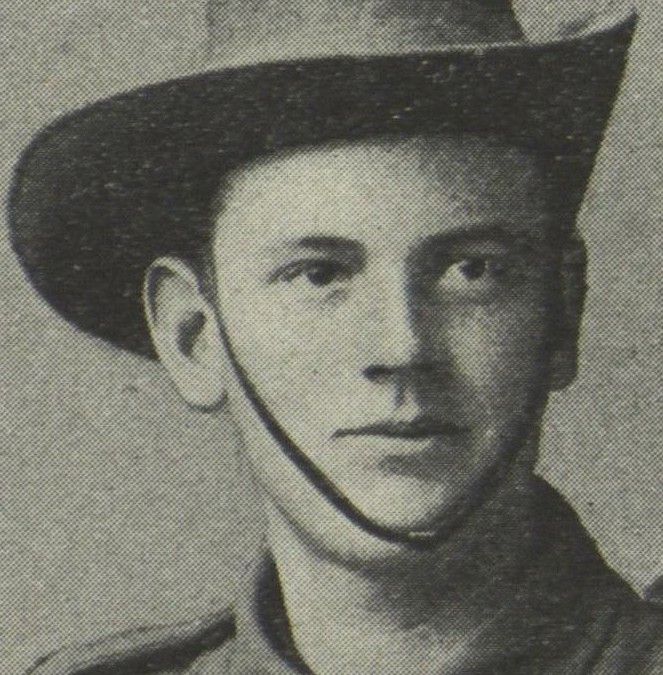
1224 Private (later Lance Corporal) William Charles Hearne, from Parramatta Soldiers, Cumberland Argus, 1920
William Charles Hearne (18/10/1896 – 23/02/1969) was the eldest son of George and Jayne Hearne, of Pitt Street, Granville[1] and the older brother of Bugler Ernest Fredrick Hearne of the 2nd Australian Battalion (service number 6516) and G. Hearne. He was a labourer when he enlisted on 26 March 1915 with the 5 Infantry Brigade, 20 Infantry Battalion – “D” Company in the Liverpool camp. As he was 18 years and 7 months old, he had to get his parent’s consent to join the Australian Imperial Expeditionary Forces. He embarked on 25 June 1915 from Sydney aboard HMAT Berrima A35 to Alexandria, Egypt for training.
In one of his many letters sent home and later published in The Cumberland Argus and Fruitgrowers Advocate on Saturday 31 March 1916, he wrote to his mother, by then living at Boundary street, Parramatta:
… “from the French trenches that he doesn’t think the war will go on much longer. He relates also that only five others are left out of the old company which left Sydney so light-heartedly for the trap which bungling British want-of-intelligence officers had set for them. They were now up to their knees in mud in France. The only thing that worried him were his cold feet. He added (no doubt with a thought on some ferocious soldiers he had seen on parade in Parramatta) that “he didn’t mean the real cold feet!”[2]
In another letter from France, he writes he found London “not a bad place for a holiday!” Of course, nothing like Smithfield or Coo-ee Gully![3]. At the time (March 1917), it appears he may have been in hospital recording from gunshot wounds.
On 23 April 1918, he was appointed Lance Corporal. A month later he would suffer “shell wounds” to his neck when a bomb exploded. He also sustained gun shot wounds to his left thigh. By 12 December 1918 he was medically discharged and returned home pon board the ‘Nestor’.
On 20 May 1942, he enlisted with the 16 Garrison Battalion at Paddington, Sydney during World War Two (service number N391651). After 742 days, he was discharged 30 May 1944 in Sydney.
In December 1962 he wrote to the Central Army Records Office in Melbourne, Victoria to try to recover his lost military awards and medals as he states in his Statutory Declaration that “on 10 June 1960 [his] room was destroyed by fire, everything was destroyed”. He also mentions that he lived alone in Saratoga, a south-eastern village and suburb of the Central Coast region of New South Wales.
On 23 February 1969, he passed away aged 73.
Anne Tsang, Research Assistant, Parramatta Council Heritage Centre, 2015
Reference
- Private W. C. Hearne. (1916, May 6). The Cumberland Argus and Fruitgrowers Advocate, p. 10. http://nla.gov.au/nla.news-article86074289
- Not the real cold feet. (1917, March 31). The Cumberland Argus and Fruitgrowers Advocate, p. 6. http://nla.gov.au/nla.news-article86085529
- Brevities. (1917, March 31). The Cumberland Argus and Fruitgrowers Advocate, p. 6, para. 2. http://nla.gov.au/nla.news-article86085548
- National Archives of Australia. (2002, 2013). B2455, HEARNE W C 1224 (Barcode: 4749954). Retrieved from http://soda.naa.gov.au/item/4749954
- Commonwealth of Australia. (2002). World War 2 Nominal Roll – http://www.ww2roll.gov.au/Veteran.aspx?ServiceId=A&VeteranId=362507
- Google (2016) ‘Sarantoga NSW 2251’, Google Maps. Retrieved from https://goo.gl/YwgdQS
- Death notice. (1969, February 23). The Sydney Morning Herald, p. 30


